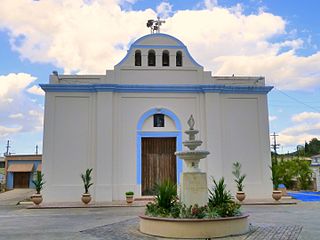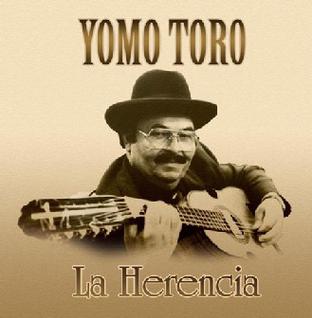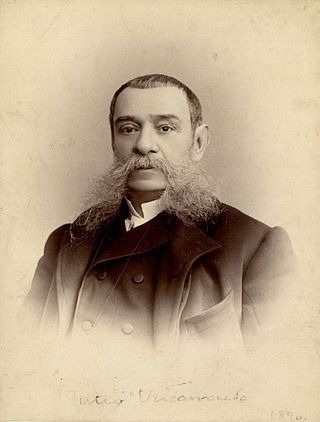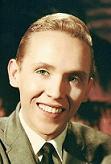
The Music of Puerto Rico has evolved as a heterogeneous and dynamic product of diverse cultural resources. The most conspicuous musical sources of Puerto Rico have primarily included African, Indigenous, and European influences, although many aspects of Puerto Rican music reflect origins elsewhere in the Caribbean. Puerto Rican music culture today comprises a wide and rich variety of genres, ranging from essentially native genres such as bomba, danza, and plena to more recent hybrid genres such as salsa, Latin trap and reggaeton. Broadly conceived, the realm of "Puerto Rican music" should naturally comprise the music culture of the millions of people of Puerto Rican descent who have lived in the United States, especially in New York City. Their music, from salsa to the boleros of Rafael Hernández, cannot be separated from the music culture of Puerto Rico itself.

Merengue is a type of music and dance originating in the Dominican Republic, which has become a very popular genre throughout Latin America, and also in several major cities in the United States with Latino communities. Merengue was inscribed on November 30, 2016 in the representative list of the Intangible Cultural Heritage of Humanity of UNESCO.

Vega Alta is a town and municipality of Puerto Rico. Vega Alta is on the northern coast of the island, north of Morovis and Corozal; east of Vega Baja; and west of Dorado with an area of 28 square miles (73 km2). Vega Alta is subdivided into seven barrios and Vega Alta barrio-pueblo. It is part of the San Juan-Caguas-Guaynabo Metropolitan Statistical Area.
Julita Ross was a singer of Puerto Rican danzas, also known as "The Great Lady of the Danzas".

Pedro Ortiz Dávila, better known as Davilita, was a popular Puerto Rican singer of boleros and patriotic songs. He was the first artist to record the Rafael Hernández standard "Lamento Borincano".

Pablo Rodríguez Lozada, better known as Tito Rodríguez, was a Puerto Rican singer and bandleader. He started his career singing under the tutelage of his brother, Johnny Rodríguez. In the 1940s, both moved to New York, where Tito worked as a percussionist in several popular rhumba ensembles, before directing his own group to great success during the 1950s. His most prolific years coincided with the peak of the mambo and cha-cha-cha dance craze. He also recorded boleros, sones, guarachas and pachangas.
Ismael Miranda, also known as El Niño Bonito de la Salsa is a Puerto Rican singer and songwriter.
Tito Lara, was considered by many to be Puerto Rico's first television singing idol.

Vicente Carattini, was a singer and composer of Puerto Rican Christmas-related songs.
The cuatro is a family of Latin American string instruments played in Puerto Rico, Venezuela and other Latin American countries. It is derived from the Spanish guitar. Although some have viola-like shapes, most cuatros resemble a small to mid-sized classical guitar. In Puerto Rico and Venezuela, the cuatro is an ensemble instrument for secular and religious music, and is played at parties and traditional gatherings.

Víctor Guillermo "Yomo" Toro was a Puerto Rican left-handed guitarist and cuatro player. Known internationally as "The King of the Cuatro," Toro recorded over 150 albums throughout a 60-year career and worked extensively with Cuban legends Arsenio Rodríguez and Alfonso "El Panameño" Joseph; salsa artists Willie Colón, Héctor Lavoe and Rubén Blades; and artists from other music genres including Frankie Cutlass, Harry Belafonte, Paul Simon, Linda Ronstadt and David Byrne.

Julio Vizcarrondo Coronado was a Puerto Rican abolitionist, journalist, politician and religious leader. He played an instrumental role in the development and passage of the Moret Law which in 1873 abolished slavery in Puerto Rico. Vizcarrondo was also the founder of the Protestant movement in the Iberian Peninsula in the 19th century.

Miguel Poventud a.k.a. "El Niño Prodigio de Guayama" and "Miguelito", was a Puerto Rican musician, singer, actor and composer of Boleros. Among the singers who have interpreted his musical compositions are Johnny Albino, Héctor Lavoe and Daniel Santos.
Tomás Rivera Morales, simply known as "Maso Rivera", was a Puerto Rican musician and a major exponent of Puerto Rico's Jíbaro music. Rivera composed over 1,000 instrumental compositions for the Cuatro, Puerto Rico's national instrument.
Lorenzo Santiago "Chago" Alvarado Santos (1920–1982) was a Puerto Rican singer, composer, and guitarist. He became internationally famous with Johnny Albino and Félix ("Ola") Martínez as part of the Trío San Juan during the years 1949–1957. Among his best tunes was the 1956 bolero named "Siete notas de amor".
Edwin Colón Zayas, is a Puerto Rican cuatro player from Puerto Rico. He joins a large number of Puerto Rican artists, "innovative tradition-bearing," who focus their talents in extolling the virtues of the Puerto Rican creole and Jíbaro way of life.

Isaac Oviedo was a Cuban tres player, singer and songwriter. He was the founder and leader of the Septeto Matancero for over 50 years, and the author of many famous sones such as "Engancha carretero". Throughout his long career Oviedo only recorded a handful of sessions, mostly for American record labels. He has been called "one of the greatest Cuban tres players" by other musicians such as Efraín Ríos and Pancho Amat. According to the latter, Oviedo was the pioneering and most influential tresero of the septeto format. His technical innovations include the alzapúa thumb stroke and the use of the pinky finger.
Juan Ramírez Rivera, better known as Juanchín Ramírez, was a Puerto Rican trumpeter, bandleader and composer. He was a founding member of the Septeto Puerto Rico and the Grupo Aurora, as well as a member of the Noro Morales orchestra, also playing with Boro Milián, Rafael Hernández, Machito and others. He is best known for his popular compositions, primarily guarachas such as "Anabacoa", recorded by Beny Moré and Arsenio Rodríguez among others, and also "Plena española", made famous by Billo's Caracas Boys.
Iluminado Davila Medina was a Puerto Rican musician. He was a cuatrista.
Ivette Román-Roberto, also known as Ivette Román, is a Puerto Rican performer and experimental vocalist known for her work in extended voice performance and free improvisation. She has been performing nationally and internationally since the 1980s, and has been recognized by the National Association of Latino Arts and Culture. According to the Houston Press, "Ivette is the secret weapon of Houston experimental music."










